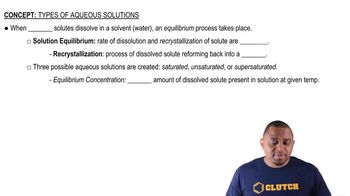Here are the essential concepts you must grasp in order to answer the question correctly.
Oxidation-Reduction Reactions
Oxidation-reduction (redox) reactions involve the transfer of electrons between species, resulting in changes in oxidation states. In this context, manganese(IV) oxide acts as an oxidizing agent, facilitating the oxidation of bromide ions (Br-) to bromine (Br2), while itself being reduced to manganese(II) ions (Mn2+). Understanding these processes is crucial for writing balanced equations.
Recommended video:
Oxidation and Reduction Reactions
Net Ionic Equations
A net ionic equation represents the actual chemical species participating in a reaction, excluding spectator ions that do not change during the reaction. To write a net ionic equation, one must first identify the ions in solution, eliminate the spectator ions, and ensure that both mass and charge are balanced. This simplification helps focus on the key chemical changes occurring in the reaction.
Recommended video:
Acidic Aqueous Solutions
In an acidic aqueous solution, the presence of hydrogen ions (H+) influences the behavior of reactants and products. Acidic conditions can affect the solubility and reactivity of certain species, and they often facilitate the transfer of protons in redox reactions. Recognizing the role of acidity is essential for accurately balancing the net ionic equation and understanding the reaction dynamics.
Recommended video:
Types of Aqueous Solutions
 Verified step by step guidance
Verified step by step guidance

